Wi-Fi 6 vs. Wi-Fi 5 Benchmarked: How Does the New Generation Perform?
We're starting to see more than Wi-Fi half-dozen capable devices striking the market place, so naturally, the large question is: should you upgrade? Today we are taking a look at how some of these systems perform compared to those from the previous generation. The goal here isn't to recommend a specific brand or organization, but rather to run into how the new technology and features stack up.
When comparing the operation of a wireless network, there are a few key areas to measure. Transfer speed is the most obvious, but signal strength and network capacity are just as of import. It's great if you tin can become fast speeds close to the router, but if they driblet off a cliff once you lot get into the next room, then what good is it? Those will exist the three categories we will use to rate a system'southward performance.
Equally with whatsoever major new release, Wi-Fi 6 (802.11ax) brings a host of new features compared to Wi-Fi v (802.11ac). For a deep swoop into the applied science and each surface area of comeback, check out our Wi-Fi 6 Explained. TL;DR: Wi-Fi 6 allows more bits to exist sent with each transmission for improved speed. It likewise makes better utilise of the wireless spectrum to improve multi-device performance in crowded environments. In less dumbo environments, Wi-Fi half dozen allows for more simultaneous connections from each device to increment throughput.
While Wi-Fi 6 certainly offers faster speeds compared to previous generations, that's not necessarily its chief goal. The newer standard focuses largely on optimizing existing technologies. Futurity enhancements such as Wi-Fi 6E will open up new chunks of spectrum for enhanced speed, just that'south a year or and so down the road.
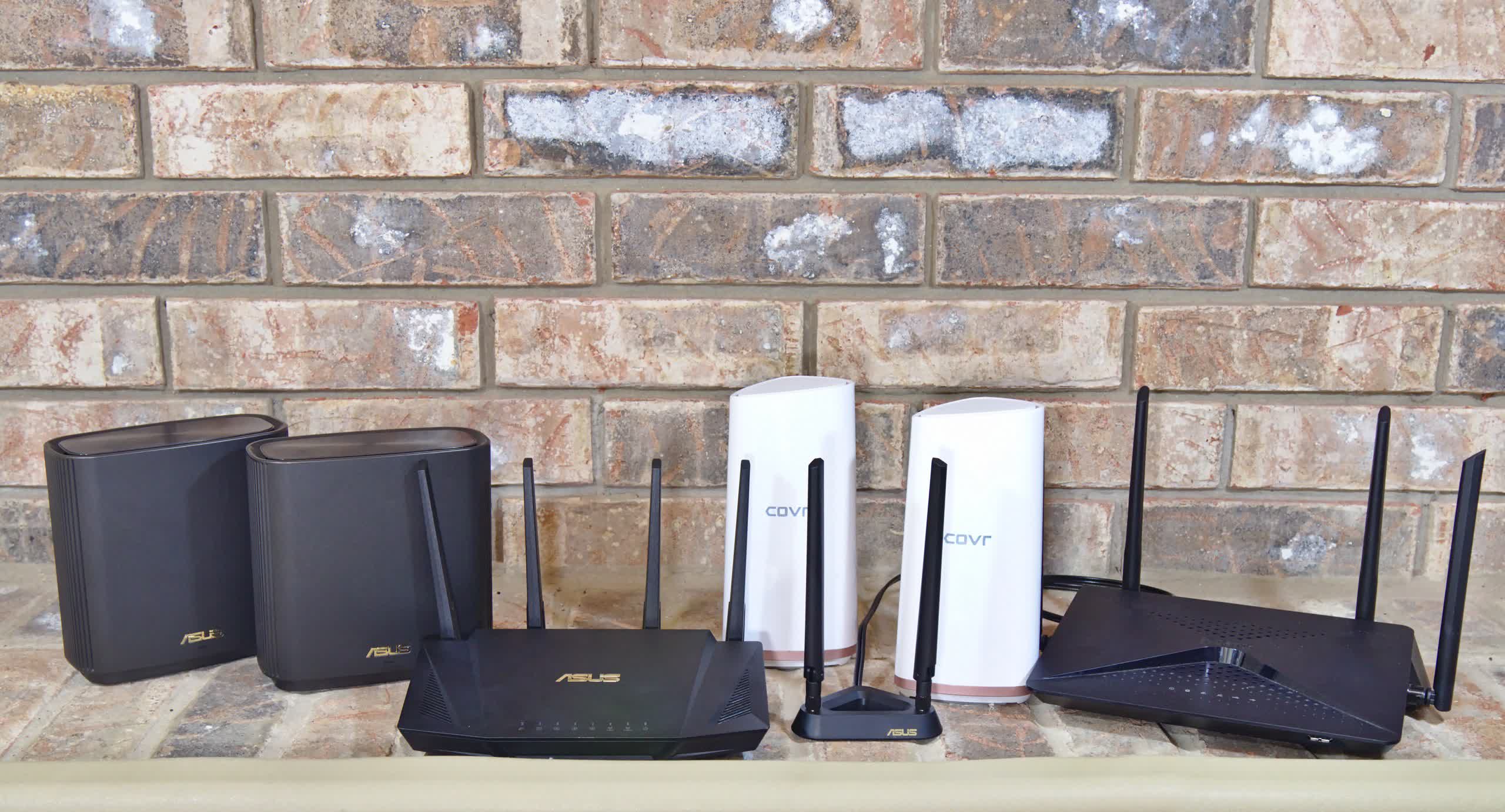
For our examination we'll be comparing four devices: ii previous generation Wi-Fi five devices and two new Wi-Fi vi systems. On both sides, we take one standalone router and i dual-unit mesh arrangement. There are certainly many options for routers in either category, with different levels of performance and cost. We're currently working on a Wi-Fi six Mesh roundup for more details on individual systems merely for now, and for the purpose of comparing Wi-Fi half dozen vs. Wi-Fi five, the units we've chosen are meant to exist a typical example of the performance such a system can achieve, non necessarily the fastest on the market.
Our two Wi-Fi half dozen devices are the Asus ZenWiFi XT8 which is a mesh system and the Asus RT-AX3000, a standalone router. On the Wi-Fi five side, nosotros'll use the D-Link Covr 2202 for our mesh system and D-Link DIR-882 for our standalone router.
Equally of writing, these devices can exist purchased for $430, $180, $280, and $130, respectively. Don't look too much into pricing since we're generally focused on the technologies involved here and non the specifics of a device. Yous tin can become more than affordable Wi-Fi 6 mesh systems for under $300 and conversely y'all can pay close to $400 for a high-finish Wi-Fi v router.

The two mesh Wi-Fi systems tested
Our testing methodology was every bit follows: All units were placed in the aforementioned positions, shown in red in the map below, and performance results were measured from the locations shown in blueish. We ran all tests with a unmarried Wi-Fi 6 client offset and then with both a Wi-Fi five and Wi-Fi 6 client at the same time. The examination devices at locations 1, 3, and 5 used a high performance PCIe based Wi-Fi six adapter while the rest of the locations were tested on an Acer Swift 3 laptop with congenital-in Wi-Fi half-dozen. The Wi-Fi five client was a OnePlus 6T and was used at all locations.
Data was transferred from each client to a server which tracked how fast the network performed. Tests marked with "wired" correspond data transfer speeds to a server connected to our router via Ethernet, while tests marked as "wireless" were sent to a wireless server within the same network. In the wired set of tests, the data is sent over Wi-Fi once from the client to the router and then via Ethernet to the server. In the wireless tests, the data is sent over Wi-Fi twice: once from the customer to the router and then again from the router back out to the server. The wireless tests are more enervating since the Wi-Fi connection must share the transfer in both directions.
This diversity of devices and locations ensures we become a more than realistic example of how the devices volition perform. We found this to be a more meaningful setting than testing each device in an isolated environs.
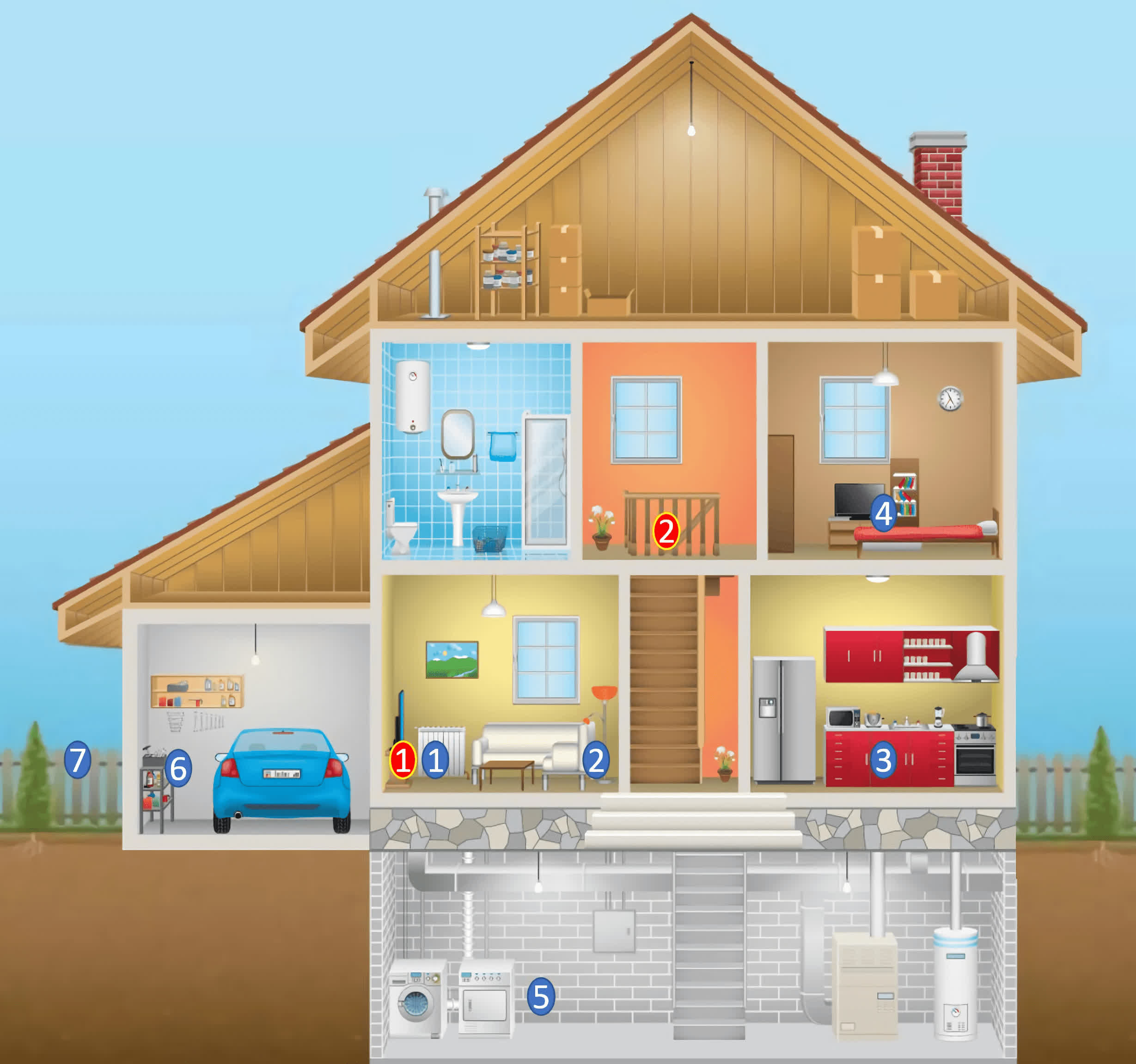
Testing in an open environs ways there are neighboring routers causing interference. These routers don't take the advanced spectrum sharing and client management algorithms that Wi-Fi 6 has, and then we can't straight examination those features. That would be the one fourth dimension where an isolated sleeping room would exist beneficial for testing. Besides that, our results are something that every home / small office users will exist able to achieve.
Wireless Operation
Starting with signal force, the units of measurement here are in dBm and correspond the corporeality of signal power at the receiver. They are negative and larger values (closer to 0) represent a stronger signal. This calibration is logarithmic so each increase of 3dBm represents a signal that is twice as powerful. There are federal limits to how much ability a device can transmit, so this test is aimed at characterizing the antenna quality and how well each device makes use of its limited power budget.
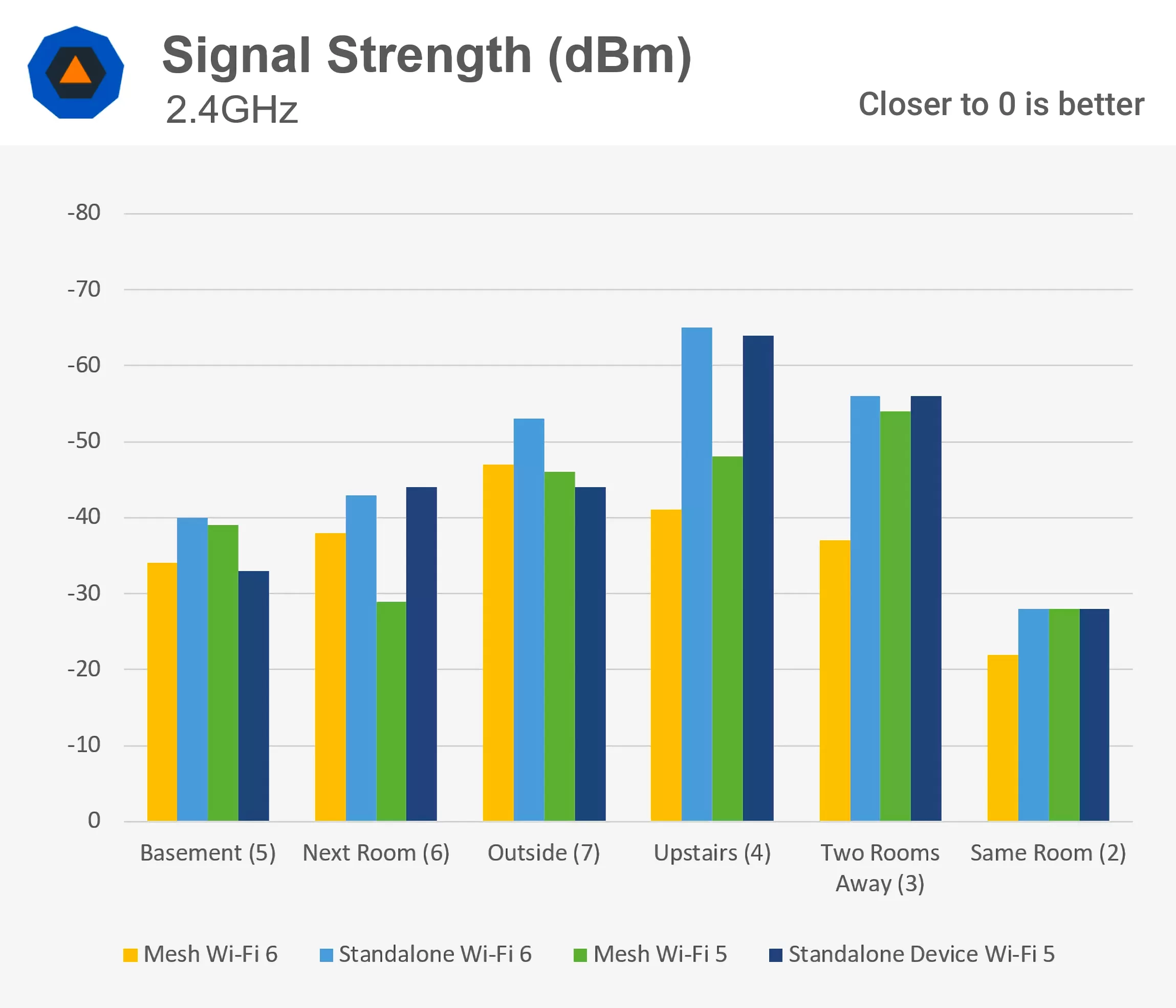
In the 2.4GHz band, the Wi-Fi 6 mesh system generally offers the all-time signal strength. On the 5GHz side, it'due south more than of a tie between systems. Once you first getting farther away, the benefits of a mesh network go articulate.
The standalone devices could barely reach the opposite corner of the house. In that scenario withal, the Wi-Fi vi system does come up out ahead slightly overall.
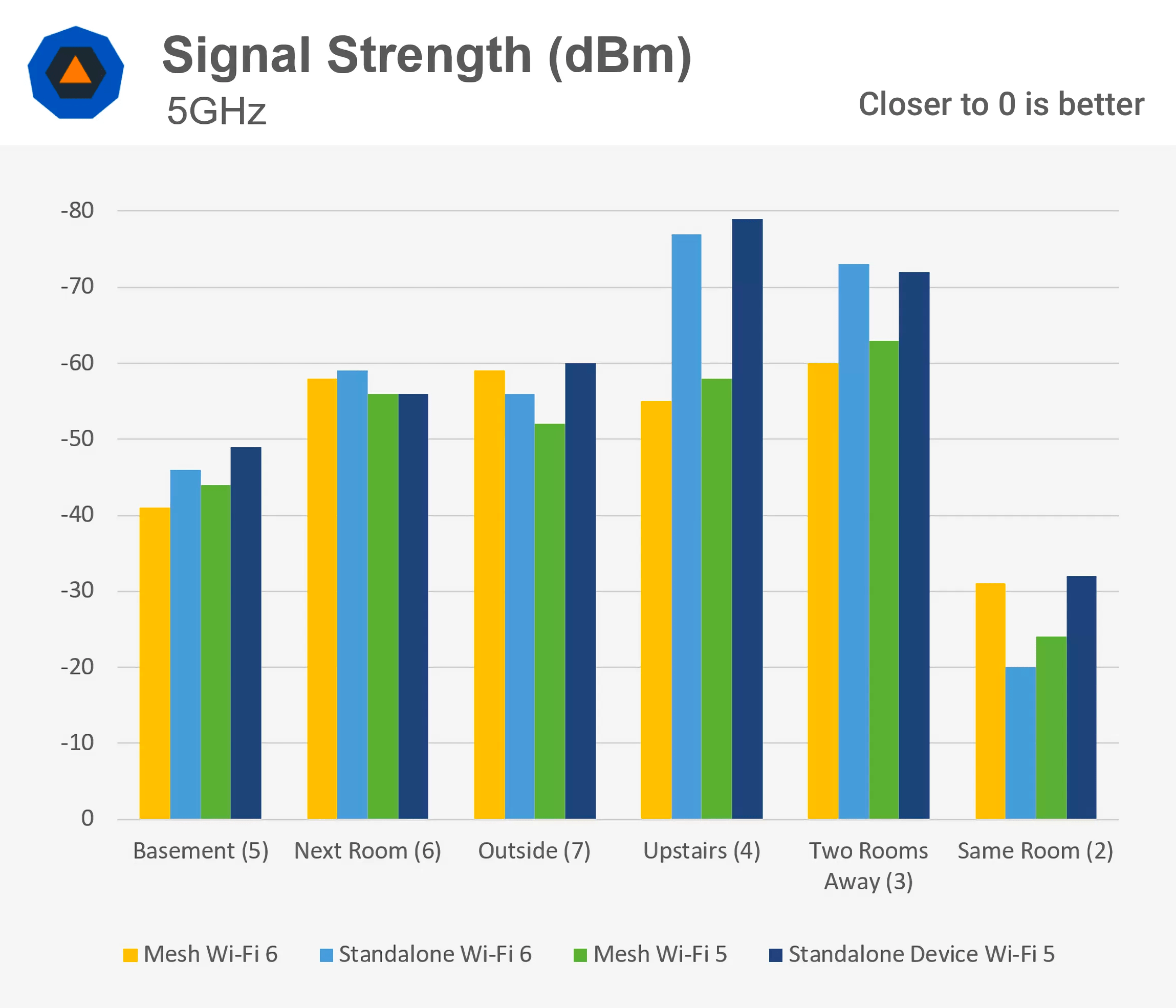
Looking at both bands every bit a whole, information technology's hard to draw any conclusions hither. The upgrade to Wi-Fi 6 doesn't include any changes to transmit power and it even so operates on the same 5GHz frequency ring. Advances in beamforming and antenna technology over fourth dimension will always give the edge to newer technology.
Nosotros'll move on to speed now. These results were obtained with iPerf3, an industry standard tool for benchmarking network throughput. Platonic performance is the showtime examination and this was measured with the transmitter and receiver very close together.
This represents the fastest transfer speed the device is capable of operating at in a situation without any obstacles or betoken degradation. Information technology would likely be possible to accomplish higher speeds in a lab setting without interference, but this is about the max that whatever user can typically expect to get.

At 950Mbps for the Wi-Fi 6 unit, this is the commencement time we've seen a wireless device bottlenecked by its gigabit Ethernet interface. That ways you'll demand to upgrade the rest of your networking equipment to 2.5Gbps or 10Gbps to be able to accept advantage of the extra performance.
Google Cobweb and xFinity offer 2Gbps cyberspace packages, only this is an uncommonly rare scenario. In ideal circumstances, Wi-Fi 6 offers a roughly 50% functioning heave over Wi-Fi v. The two standalone units also outperform their mesh counterparts past virtually 10-20% percent. This is common between both generations as mesh systems typically consist of several less-powerful units. Because of this, using a mesh system in a small location will unremarkably effect in lower max speeds than a single unit of measurement.

The next test was done in the same room, but at a more than reasonable distance. We meet much the same story as with the ideal examination, just slightly lower speeds. Adding a second device lowers speeds slightly on three of the four devices while the Wi-Fi 6 mesh organization actually increased slightly. With more contention for the aforementioned wireless channel, the overhead results in full speed that is less than that of a single device. The single Wi-Fi half-dozen device is still the articulate winner though. Keep in mind that these are actual file transfer speeds, not just theoretical marketing numbers.

Moving on, we have results from when the device is in the basement -- position 5 on the diagram. For the wired test, nosotros see the two standalone units come out ahead since they are withal within relatively close range. Calculation a 2nd simultaneous device into the mix, the single Wi-Fi five device really comes out alee. It doesn't see whatever functioning gain or loss from the boosted connection while the Wi-Fi vi devices really got slightly slower.
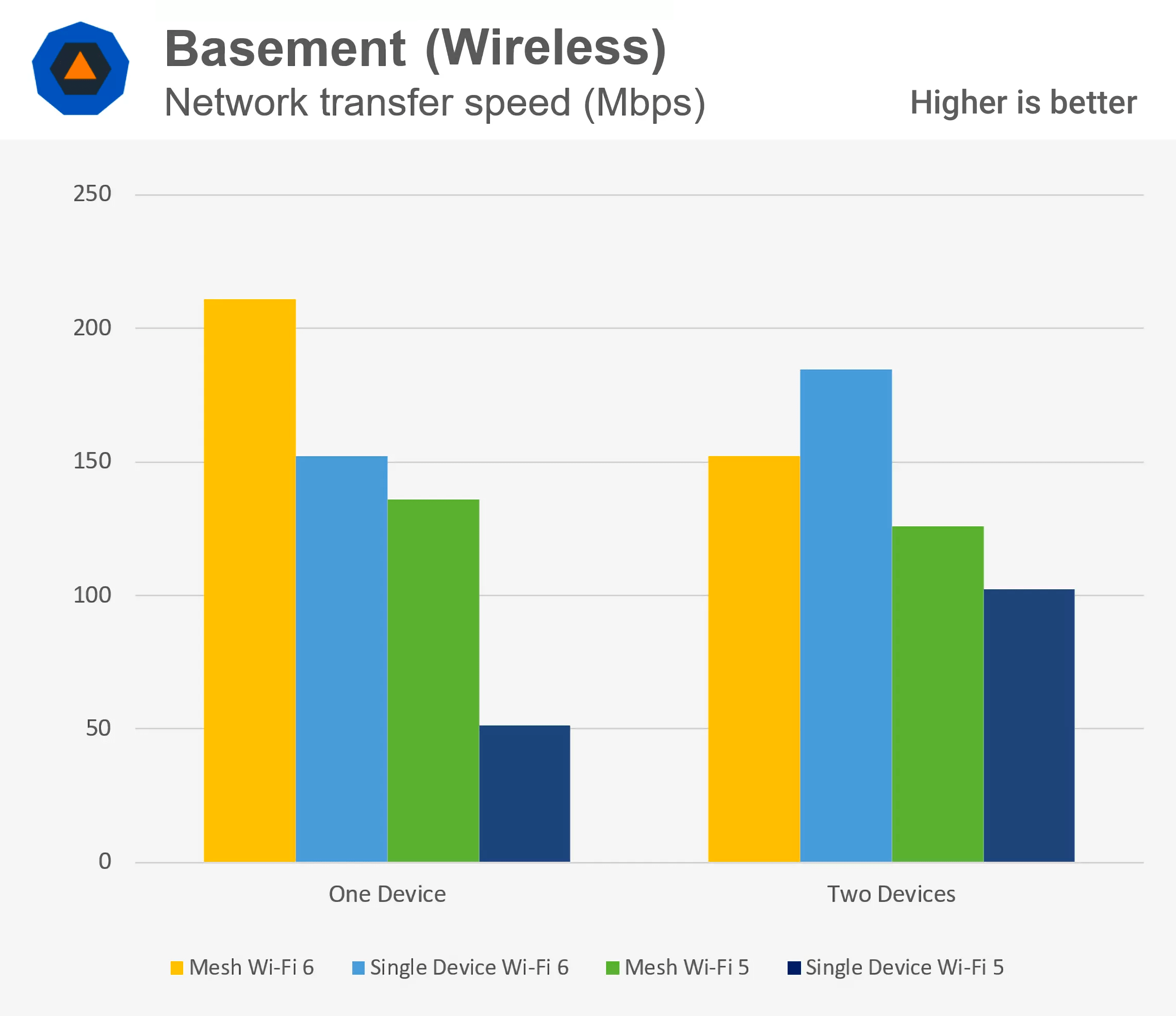
For the tests with a wireless endpoint located every bit position 3 on the diagram, we encounter significantly slower speeds all effectually. That same Wi-Fi 5 standalone unit that performed well with a wired endpoint actually falls curt. The two Wi-Fi 6 devices are the winners here.

We took the test outside to come across how well signal traveled through an exterior wall. Since this location is still close to the routers, the unmarried device results are nonetheless on height. Surprisingly, the older Wi-Fi 5 unit edges out our newer Wi-Fi 6 router.
It's interesting to see that we achieve a significant performance gain when testing two devices simultaneously for the mesh systems. That is likely because the testing location is roughly equidistant from both mesh points, so the two clients could exist served betwixt the ii organisation units.

The next examination location is two rooms abroad and is indicated by position 3 on the diagram above. This is right at the edge of where a mesh system starts to become faster. With a single client, the two mesh systems outperform the standalone units.
When we add a second device, mesh performance drops off slightly on the Wi-Fi 6 device just stays pretty constant on the standalone Wi-Fi 6 device and mesh Wi-Fi 5 system. The standalone Wi-Fi 5 device starts to struggle here and functioning drops significantly. The Wi-Fi six arrangement here is a chip faster, simply not by much.

This last test is a worst-example scenario with the clients and endpoints located at opposite corners of the business firm and on unlike levels. Normally you would want to place your router in a more than fundamental location, simply that's not ever possible. The benefits of a mesh organization are fabricated evident here.
Connections on the standalone devices are almost unusable and the Wi-Fi 5 router failed completely with ii connections. At this range, nosotros can besides see the functioning improvements brought by optimizations in the Wi-Fi 6 standard.
Upgrade or Not?
That was a lot of graphs and numbers, and then let'due south pace dorsum and talk virtually what this all means. The Wi-Fi 6 devices are clearly faster, only not by much. If you already have a working Wi-Fi 5 system that yous're happy with, there'due south well-nigh no reason to upgrade. The just scenario where it would be worth it is if you have a gigabit cyberspace connection and you want to maximize that. Nosotros don't encounter the modest performance comeback justifying the upgrade otherwise. Most home use scenarios similar streaming or spider web browsing won't saturate a connectedness like this.
If you aren't happy with your current organisation and are in the market for a new router, then we would certainly consider Wi-Fi vi.
Go along in listen that some of the big scalability and network management improvements from Wi-Fi 6 won't kickoff having their total benefit until the bulk of clients on a network have Wi-Fi 6. In a year or two from now when this is the instance, it will go a no-brainer.

The two standalone Wi-Fi units tested
For a standalone unit, the toll premium for Wi-Fi 6 in the devices we tested today is about $50, but that will vary depending on the type of units, brand and then on. If you alive in a smaller space that can be covered by a single unit of measurement, we do think Wi-Fi six is worth it. You'll meet a modest performance improvement now and a much more substantial performance improvement down the route.
For mesh systems, the selection can get a flake trickier. Mesh Wi-Fi is relatively new, and then if you already have one such system, information technology won't be very old, and yous shouldn't need to upgrade just yet. A consumer looking at mesh options is one that needs coverage for a larger infinite and more devices. Wi-Fi 6 is not bad here, just merely really shines when there are lots of Wi-Fi 6 clients. If yous have older devices like phones, streaming boxes, or laptops and don't plan on upgrading in the adjacent year or so, we wouldn't buy a Wi-Fi 6 system just yet. You can safely look it out until more uniform devices are released. All the same, if you do have a new laptop or phone that supports Wi-Fi 6, y'all'll capeesh the functioning improvement, then we'd be comfortable recommending the upgrade.
Stay tuned for our upcoming Wi-Fi six router roundup for recommendations on the best units you can buy.
Shopping Shortcuts:
- Asus RT-AX3000 Wi-Fi 6 on Amazon
- Asus ZenWiFi XT8 Mesh Wi-Fi 6 on Amazon
- Netgear Nighthawk AX8 Wi-Fi half dozen on Amazon
- Netgear Orbi Tri-Band Mesh Wi-Fi 6 on Amazon
- D-Link Covr 2202 Mesh Wi-Fi v on Amazon
- D-Link DIR-882 on Amazon
Masthead credit: Uthai pr
Source: https://www.techspot.com/article/2098-wifi-5-vs-wifi-6/
Posted by: vincentexisparbace.blogspot.com


0 Response to "Wi-Fi 6 vs. Wi-Fi 5 Benchmarked: How Does the New Generation Perform?"
Post a Comment